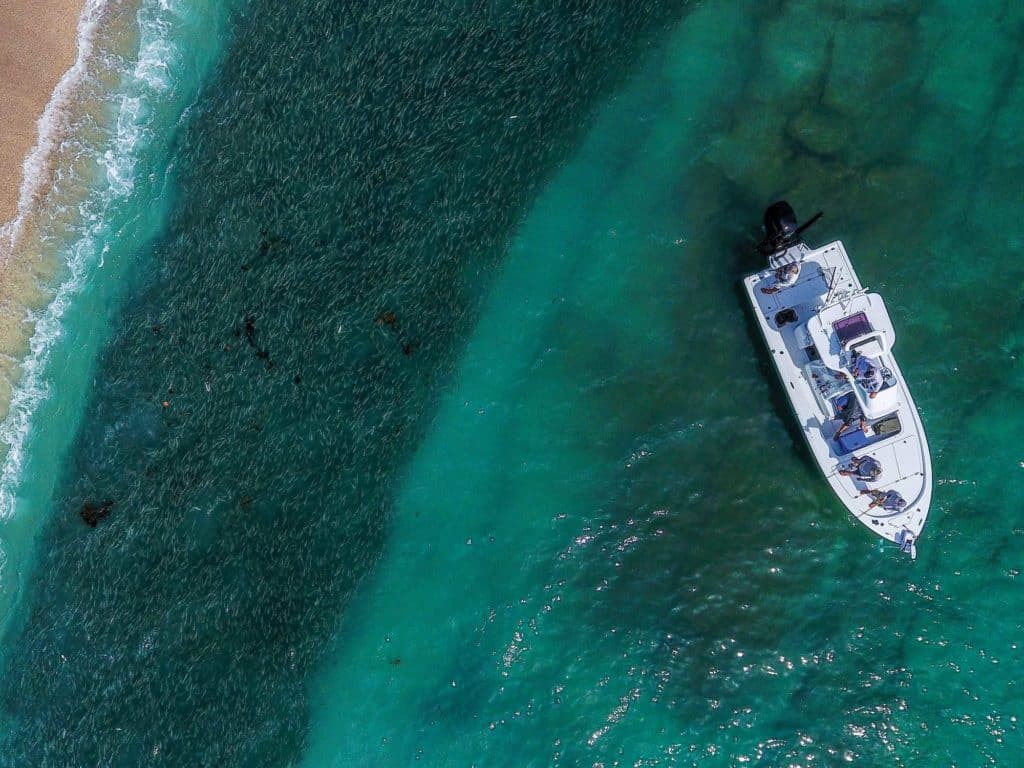
Every year, beginning in September and running well into November—and sometimes later—mullet by the millions pour out of the rivers, bays and estuaries along the Atlantic Coast and the Gulf of Mexico in a baitfish migration more akin to far-traveling birds or even lemmings than to marine fish.
They are all sizes, from fingerlings to 3-pounders, and at least two different species are in play: striped mullet and silver mullet.
Where they’re going, precisely when, and why they all don’t participate in the run is anyone’s guess. But run they do, and the resulting mayhem of fish, bait and angler excitement must be witnessed to be believed.
One of the best explanations for “the run” is by biologists who say mullet seek the perfect mix of saline content to release eggs and milt for spawning. They push along the coast, waffling from the beach to well offshore, until they find the right salt-fresh mix, then they spawn.
Biologists have documented Gulf of Mexico white mullet migrating 100 miles during the run. These particular fish move chiefly east and west, not north and south. Still, move they do, and the results are just as spectacular.
A wide array of gamefish species follow mullet schools as they run the predator gauntlet to perceived safe havens. And that is why the run is so important to anglers—it’s a forage feast for large fish and fishermen who know where, when and how to tag along for the annual seasonal ride.
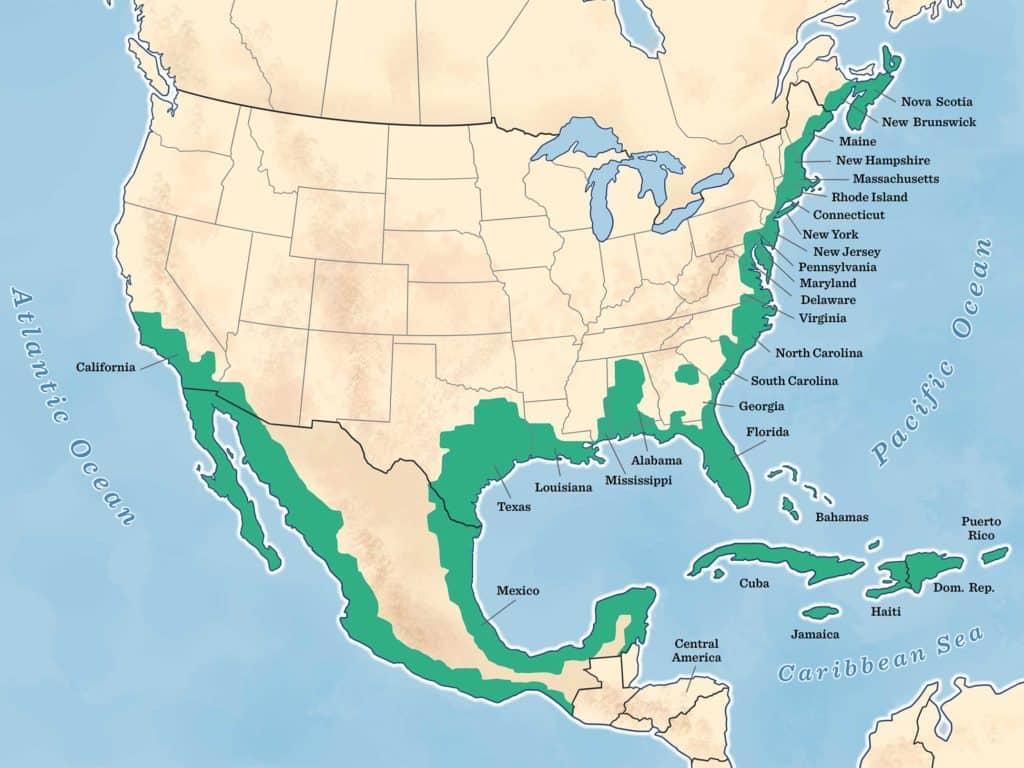
Raging Redfish
It’s a redfish riot along the southeast coast, beaches, rivermouths and inlets during the fall mullet run. The mullet parade coincides with the redfish autumn spawning run to inlets and sounds, and oversize drum are delighted with the sudden bounty. Some of the biggest redfish of the year are caught in lower rivers, inlets and estuaries during the mullet-run peak.
Most mature redfish that work on mullet along beach areas are too large to keep under some state regulations, so be sure to check state laws to follow sizes and limits.
Anglers specifically seeking reds around mullet pods usually are on the water at daybreak, looking for brown-colored bait schools in slick water. At times, mullet are seen “nosing” the surface, usually within a few hundred yards of breaking surf. A slight northeast wind offers the best fishing because it tends to stack baitfish tight to shore, where they’re vulnerable to redfish and anglers.
Surging Sharks
Sharks—about as big as they get—can be found around mullet schools on all coasts, inshore and offshore. Big bulls and other species that crowd the quarter-ton mark might be fun for some anglers. Light-tackle anglers bent on casting to mullet schools aren’t interested in that body-building kind of tug of war. But mini sharks under about 70 pounds are different, especially spinners and blacktips, which leap and run, and are pretty good on the dinner table too.
Snook Showdown
Consistent snook action during the mullet run begins around Sebastian Inlet, south of Cape Canaveral. Some snook are caught north of there to about Daytona Beach, but the mullet run prompts a snook feeding orgy from Sebastian south. Down to Miami, the mullet run and the snook bite can be something to behold.
“One important key for snook is to match the size bait to the size mullet in a school where linesiders are feeding,” says Capt. Phil O’Bannon, a famed Charlotte Harbor guide with extensive snook experience on both coasts during the mullet run. “If, for example, bait pods are holding mostly mullet in the 6-inch range, that’s the size bait to employ, preferably caught from the same schools snook are hitting.”
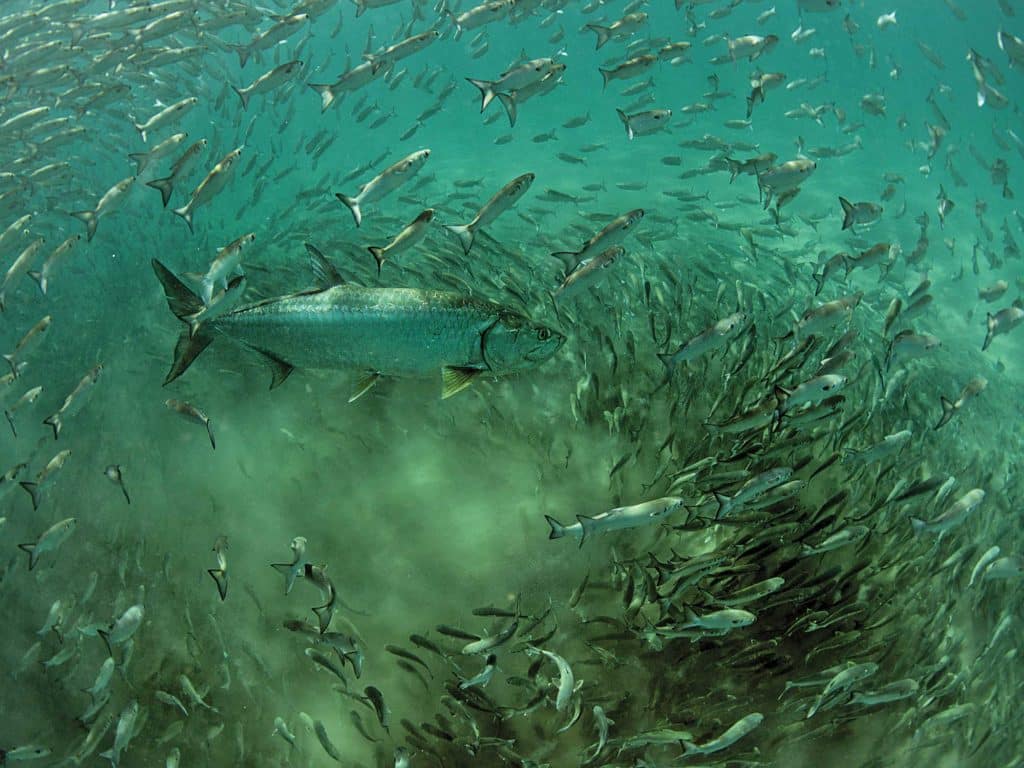
Tarpon on a Tear
There may be no better time or place to get into fast, frantic and exciting tarpon action than during the mullet run. Tarpon pound mullet on the East Coast from the Carolinas through Florida. The tarpon action really begins to heat up along the Georgia coast and through the Sunshine State when mullet make the scene.
In the Carolinas, Georgia and north Florida, much of the most consistent action is along the beach, where tarpon often crash bait and leap as they eat their way through waves of hapless migrating mullet.
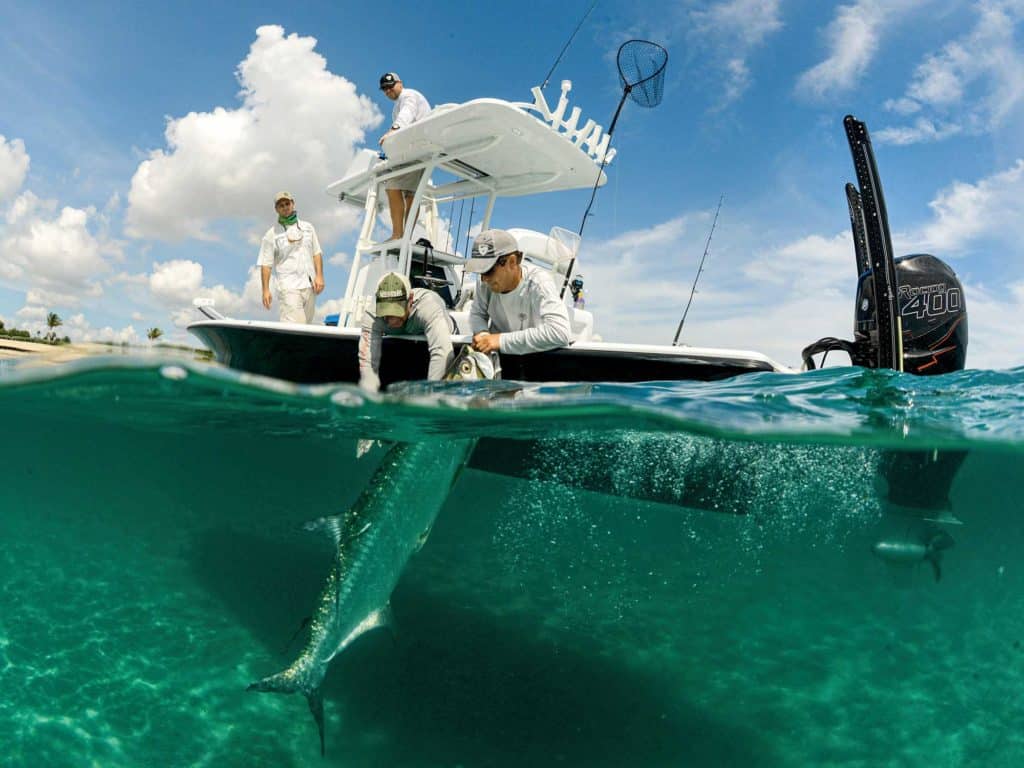
Kings and ’Cudas Crash the Party
On the East Coast, king mackerel and barracuda make the mullet-run scene in many areas.
In some spots, barracuda are rarely in tight to the beach. But 20-pound-class king mackeral can be in surprisingly good supply, especially when schools of mullet extend out a mile or two from shore.
King and ’cuda dentures require wire leaders. For live-baiting, tandem-hook trolling rigs make the most sense because both target species make a habit of rear-end-clipping live baits.
Slow-trolling around deepwater mullet pods is the way to go for kings and ’cudas. And keep a watchful eye for mackerel skyrocketing on nearby bait schools.
Don’t fight the feeling to run to a distant spot if you see kings blasting out of the water. Get there fast, set out fresh and lively baits, and make slow, careful turns around mullet schools.
Getting too close to a school is easy to do, but resist it to avoid spooking mullet and causing them to flush or dive, and possibly alert or pull kings or ’cudas away.
Jacks, Blues and Spanish Macks
While most mullet-chasing anglers are after tarpon, snook and redfish, don’t turn up your nose at the many other fun-to-catch and incredibly aggressive species that mangle mullet with the best of ’em.
Jack crevalle, bluefish and Spanish mackerel fall into this lot of character actors in the mullet-run drama. And while rare is the angler who puts a crevalle on the same level as a snook, when a swarm of 15-pound yellow-tinged jacks mob a mullet school, few anglers don’t instantly fire baits and lures into the carnage.
Fly-rodders can have the time of their lives during such jack, bluefish and mackerel feeding blitzes. For young fishermen (and oldsters too) who want to simply bend a rod during a frantic foray, nothing beats a mullet pod surrounded by marauding murderers ready to eat.
Read Next: The Best Lures to Throw During the Mullet Run
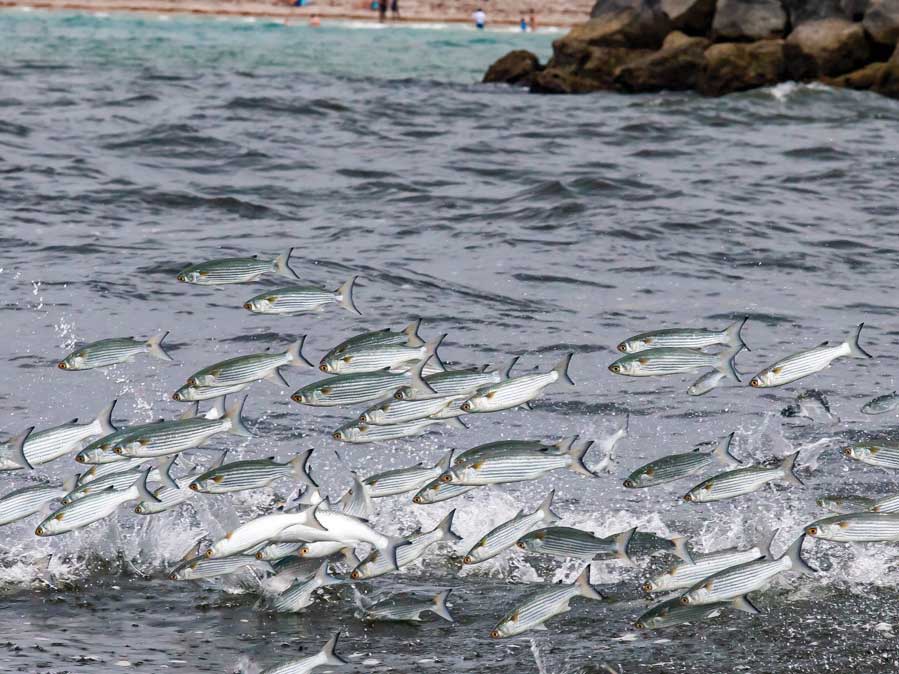
Three Great Lures for Mimicking Mullet
Anglers who chase the annual mullet run learn to track the arrival and recognize the many different sizes, colors and behaviors of the little fish. The best mullet lures imitate the bait’s many shades and moods. Since there isn’t room in the tackle box for a hundred lures, our picks cover a couple can’t-beat options when the mullet show.
- LIVETARGET Mullet SwimBait: A mullet copied to perfection. When they only want live bait, throw this swimmer.
- Z-Man Diezel Minnowz, Trout Eye Jig Head: Durable and versatile, a slow retrieve with this soft bait gets everyone’s attention.
- 52 MR MirrOlure: Entice fish using a pause-and-twitch return; try two twitches followed by a pause.









